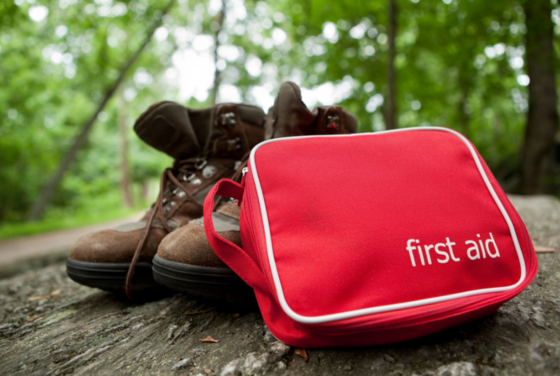 In the past two weeks, Botetourt Fire & EMS search and rescue personnel have responded to three separate events along the Tinker Mountain section of the Appalachian Trail for distressed hikers. In at least two of the cases, a lack of preparedness was the main reason for needing assistance.
In the past two weeks, Botetourt Fire & EMS search and rescue personnel have responded to three separate events along the Tinker Mountain section of the Appalachian Trail for distressed hikers. In at least two of the cases, a lack of preparedness was the main reason for needing assistance.
“Every year we try to do our part to encourage preparedness when hiking the trail, urging those that are not familiar with the terrain to better prepare for taking on the aggressive trail system,” said Search & Rescue (SAR) Leader Daniel Murray.
Each year, fire and EMS organizations throughout Southwest Virginia respond to numerous incidents along the Appalachian Trail. It is important to make sure that those wanting to enjoy the outdoors do so in a safe manner and are prepared for the potential hazards.
SAR leader Murray says it takes upwards of 30 personnel to adequately staff a SAR mission just to get to some of the folks deep in the woods. These personnel are men and women from both volunteer and career organizations in Botetourt. “These incidents can be very taxing on our already limited resources for emergency calls,” says Chief of Fire & EMS Matt Britt.
Preparedness is crucial to a safe and fun experience in the outdoors. A few important tips include:
Have A Plan – Make sure you research your route and how long it takes to make the journey. When you determine your route and how long you will be gone, let someone know so he or she will know when to expect you back.
Hydration – Have at least enough water to ensure a quart of water per person for every 2 miles you plan to hike.
Map – Make sure to get a map of the trail you plan to hike and be familiar with reading it.
Flashlight – Make sure to have a fully charged light and spare batteries.
Cell Phone – Having a cell phone with you can be important in calling for help, so please make sure it is fully charged and that you prepare for recharging it. Cell phones, when there is service, can help responders better pinpoint your location.
Clothing – Make sure you know what the weather is expected to be and know what the temperature is forecast to be. Do not forget about a rain jacket and a pair of clean dry clothes. You never know when weather conditions will change, leaving you wet and cold.
Communicate Your Plan – Make sure you let a dependable source know your plan, when you are expected to return, the route you intend to travel, and even what color clothes you are wearing. All of this information can prove important, if for some reason you become injured and are unable to call for help.
Taking these simple steps can help ensure that you have a safe and fun experience enjoying the outdoors, as well as lessen the impact on emergency services. Just know that emergency services are available to help when needed, but they want to prevent as many occurrences as practical.
For more information, please visit: www.nps.gov


